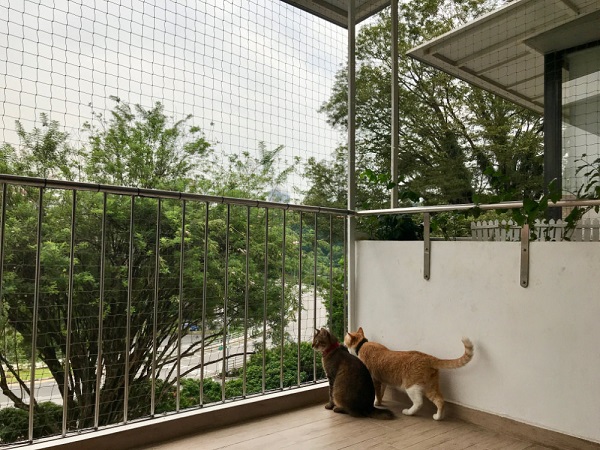Are you looking to improve the energy efficiency and comfort of your solid brick wall house? Insulating solid brick wall house can significantly impact its thermal performance, reducing heating and cooling costs while providing a more comfortable living environment. In this article, we will explore various insulation techniques, materials, and their benefits. Whether considering a DIY approach or hiring a contractor, we’ll guide you through the process, emphasizing energy efficiency, sustainability, and cost-effectiveness.
Understanding Energy Efficiency
Before delving into insulation specifics, it’s essential to grasp the concept of energy efficiency. Energy efficiency refers to the ability of a system or structure to minimize energy consumption while maximizing desired outputs. In the context of homes, energy-efficient insulation reduces the energy required for heating and cooling, leading to lower utility bills and a reduced environmental impact.
Types of Insulation Materials
There are several insulation materials available for insulating solid brick walls. Each material possesses unique properties, installation methods, and cost considerations. Let’s explore some commonly used options:
Fiberglass Insulation
Fiberglass insulation is a popular choice for insulating solid brick walls. It consists of tiny glass fibers that trap air, creating insulation pockets. Fiberglass insulation is available in batts, rolls, or loose-fill form, making it versatile for different installation requirements. It is known for its affordability, fire resistance, and ease of installation. However, proper protective equipment, such as gloves and masks, should be used during installation due to the potential skin and respiratory irritants.
Cellulose Insulation
Made from recycled paper and treated with fire retardants, cellulose insulation offers an eco-friendly and cost-effective solution for insulating solid brick walls. It can be blown into wall cavities or installed as loose-fill. Cellulose insulation provides excellent thermal performance, soundproofing capabilities, and resistance to pests. Additionally, its ability to fill gaps and conform to irregular spaces makes it ideal for insulating older homes with uneven walls.
Spray Foam Insulation
Spray foam insulation is a versatile option that expands upon application, creating an airtight seal. It is typically composed of polyurethane and is available in open-cell and closed-cell foam. Open-cell foam is less dense, providing effective soundproofing and moisture control. Closed-cell foam, on the other hand, offers higher R-values and greater structural support. Spray foam insulation is highly efficient in reducing air leakage and can be applied directly to the interior or exterior of solid brick walls.
Rigid Foam Insulation
Rigid foam insulation, often made of polystyrene or polyisocyanurate, offers excellent thermal resistance and durability. It is available in different thicknesses and can be cut to fit specific wall dimensions. Rigid foam insulation is commonly used in new construction or during major renovations, as it requires proper installation and sealing to prevent moisture infiltration. It can be attached directly to solid brick walls, providing continuous insulation and minimizing thermal bridging.
Reflective Insulation
Reflective insulation consists of layers of aluminum foil or other reflective materials that reflect radiant heat away from the living space. It is typically installed in attics or as a radiant barrier in walls. While reflective insulation alone may not be sufficient for insulating solid brick walls, it can complement other insulation materials by reducing heat gain through reflective properties. Its effectiveness relies on proper installation, minimizing air gaps to maximize performance.
Factors to Consider
Several factors should be considered when selecting insulation for your solid brick wall house. Understanding these factors will help you make an informed decision and achieve optimal energy efficiency and comfort. Let’s explore some crucial considerations:
R-Value and U-Value
The R-value and U-value are important metrics for measuring insulation’s thermal performance. The R-value indicates the material’s resistance to heat flow, with a higher value representing better insulation properties. The U-value measures the overall heat transfer coefficient, including conduction, convection, and radiation effects. For solid brick walls, insulation with a higher R-value and lower U-value is recommended to enhance energy efficiency.
Air Leakage and Vapor Barrier
Preventing air leakage is crucial for maintaining energy efficiency and indoor comfort. Insulation materials with good air sealing properties, such as spray foam or properly installed batts, help minimize drafts and heat loss. Additionally, a vapor barrier should be considered, especially in humid climates, to prevent moisture buildup within the wall assembly. A well-designed vapor barrier protects against condensation, mold growth, and potential structural damage.
Moisture Control and Mold Prevention
Solid brick walls are susceptible to moisture-related issues, such as condensation and water infiltration. Choosing insulation materials that effectively manage moisture and prevent mold growth is essential. Materials with mold-resistant properties, such as cellulose or closed-cell spray foam, can help create a healthy and durable environment.
Soundproofing Capabilities
If reducing noise transmission is a priority, consider insulation materials with good soundproofing capabilities. Cellulose insulation and spray foam are known for their sound-absorbing properties, making them suitable for insulating solid brick walls in noisy areas or near busy streets.
Fire Resistance and Safety
Fire-resistant insulation materials provide an added layer of protection for your home. Fiberglass, cellulose, and mineral wool are naturally fire-resistant options, while spray foam insulation can be treated with fire-retardant chemicals. Prioritize materials that meet fire safety standards to enhance the overall safety of your property.
Durability and Maintenance
Insulation should be durable enough to withstand the test of time. Consider materials that are resistant to pests, moisture damage, and degradation. Insulation with a long lifespan reduces the need for frequent replacements or maintenance, providing long-term energy efficiency and cost-effectiveness.
Techniques for Insulating Solid Brick Walls
Insulating solid brick walls requires careful consideration of the existing structure and the desired insulation outcome. Several techniques can be employed to insulate your home effectively:
Internal Insulation
Internal insulation, also known as dry lining, involves adding insulation to the interior surface of solid brick walls. This technique preserves the original exterior appearance while improving energy efficiency. It typically involves fixing insulation boards or batts directly onto the walls and installing a new wall finish. Internal insulation can be suitable for homes with minimal external space or architectural restrictions.
External Insulation
External insulation, also called external wall insulation (EWI), involves adding insulation to the exterior surface of solid brick walls. It provides a continuous layer of insulation, eliminating thermal bridging and improving the overall thermal performance of the building envelope. External insulation can be applied using various systems, such as insulated render, cladding, or insulated panels. This technique offers the advantage of improving energy efficiency and your home’s external appearance.
Cavity Wall Insulation
If your solid brick walls have a cavity, cavity wall insulation can be a suitable option. This technique involves injecting insulation material, such as mineral wool or foam, into the gap between the inner and outer walls. Cavity wall insulation helps reduce heat transfer and can significantly improve your home’s energy efficiency. However, it’s important to ensure that your solid brick walls are suitable for cavity wall insulation, as some older or structurally compromised walls may require alternative insulation methods.
Hybrid Insulation Systems
Hybrid insulation systems combine different insulation techniques to achieve optimal energy efficiency. For solid brick walls, a combination of internal and external insulation may be employed, depending on the specific requirements and constraints of the building. Hybrid systems offer flexibility in addressing thermal performance while considering architectural features, space availability, and cost considerations.
Hiring a Professional or DIY?
Whether to hire a professional contractor or undertake the insulation project yourself depends on various factors, including your skills, experience, and the complexity of the chosen insulation technique. While DIY insulation can be cost-effective, ensuring proper installation and adherence to building codes and safety standards is crucial. Hiring a professional insulation contractor ensures expertise, access to specialized equipment, and compliance with regulations. Consider your abilities and resources before deciding and prioritizing your insulation project’s long-term performance and efficiency.
Local Regulations and Building Codes
When planning an insulation project for your solid brick wall house, it’s important to know local regulations and building codes. These guidelines dictate the minimum insulation requirements, fire safety standards, and moisture control measures applicable to your area. Consulting with local authorities or engaging a professional insulation contractor can help you navigate these regulations and ensure compliance with the necessary standards.
Enhancing Energy Efficiency Holistically
While insulating solid brick walls is a crucial step in improving energy efficiency, adopting a holistic approach is essential to maximize the benefits. Consider the following strategies to enhance energy efficiency in your home:
Weatherization and Air Sealing
Alongside insulation, weatherization and air sealing measures play a vital role in minimizing heat loss and improving energy efficiency. Seal gaps around windows, doors, and electrical outlets, and insulate attic hatches and crawl spaces to prevent air leakage. Weatherstripping and caulking are cost-effective solutions to reduce drafts and improve the overall performance of your insulation system.
Upgrading Windows and Doors
Old or poorly insulated windows and doors can contribute significantly to energy loss. Consider upgrading to energy-efficient windows with double or triple glazing and low-emissivity coatings. Install weatherstripping and door sweeps to enhance the insulation around doors. These upgrades not only improve energy efficiency but also enhance the comfort and aesthetics of your home.
Optimizing Heating and Cooling Systems
Insulation works synergistically with efficient heating and cooling systems. Regularly maintain and tune your HVAC system to ensure optimal performance. Consider upgrading to energy-efficient models like high-efficiency furnaces, heat pumps, or programmable thermostats. Proper insulation reduces the workload on your heating and cooling systems, resulting in lower energy consumption and cost savings.
Harnessing Renewable Energy
Take advantage of renewable energy sources to further enhance your home’s energy efficiency. Consider installing solar panels to generate clean, sustainable electricity. Solar energy can power your heating and cooling systems, reducing your reliance on conventional energy sources and lowering your carbon footprint.
Conclusion
Insulating your solid brick wall house is key to enhancing energy efficiency, improving comfort, and reducing utility costs. You can transform your home into a more sustainable and comfortable living space by selecting the right insulation materials, employing suitable techniques, and considering holistic energy-saving strategies. Remember to adhere to local regulations, consult professionals when needed, and prioritize long-term durability and performance. Proper insulation makes your solid brick wall house an energy-efficient and eco-friendly haven.





